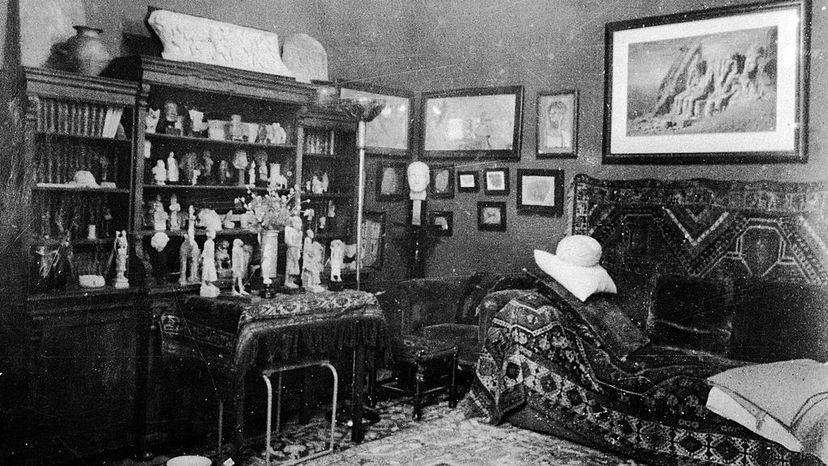Psychoanalysis: The Talking Cure

Freud is famed for developing psychoanalysis. This therapy involves treating mental disorders by delving into a person's possible unconscious issues (e.g., repressed fears and conflicts) through techniques like dream interpretation and free association.
He came upon this notion after discussing the case of "Anna O." (a pseudonym for Bertha Pappenheim) with physician-friend Josef Breuer. Anna was Breuer's patient, who was experiencing "hysteria." Breuer had discovered that if he hypnotized Anna, she'd reveal all sorts of information she didn't recall when she was conscious — and her symptoms would lessen afterward. This psychoanalytic treatment became dubbed the talking cure [sources: PBS, Grayling].
Advertisement
After learning about Anna O., Freud tried the talking cure in his own private practice, but found patients would talk pretty freely to him without hypnosis, provided they were in a relaxed position — specifically, lying down on a couch — and if they were encouraged to say whatever came into their heads, a process known as free association. Once a patient talked at length, Freud could analyze what the person said to figure out what past traumas were likely causing the patient's current distress.
After much study and use of the talking cure, Freud decided that mental health issues usually stemmed from repressed thoughts, often of a sexual nature. These could be forbidden sexual urges or due to sexual traumas that were experienced in childhood. By repressing these thoughts or traumas, the patients often ended up suffering from depression, anxiety and a host of other ailments. This is because, while certain thoughts of ours are unacknowledged, they are still in our minds in some form.
By employing the talking cure, or psychoanalysis, a therapist can help a patient dig into the destructive, hurtful issues in their unconscious minds, after which point they can deal with them. To be successful, this therapy usually means meeting with the analyst several times a week for months and maybe even years, depending on the person and their issues.
Psychoanalysis is still in use today, but not widely practiced by therapists (only about 1 in 20,000 Americans use it) [source: Dvorsky]. It can be helpful for those who have longstanding problems they haven't been able to resolve, such as feelings of inferiority that have lingered since childhood. But it's not typically used for, say, someone who has temporary anxiety or depression that stems from a specific, identifiable trauma, such as the loss of a child.
Nevertheless, studies have shown that psychoanalysis, as practiced today, is effective [source: Schedler]. There's less emphasis on dream interpretation and more on helping the patient put words to feelings. The patient often still lies down on a couch during sessions, typically with the therapist nearby, but out of sight, so as not to be a distraction. The patient will then speak of whatever comes to mind in an effort to get the unconscious mind to reveal itself. The analyst tries to interpret what may be going on in a way that is helpful to the patient [source: Kunst].